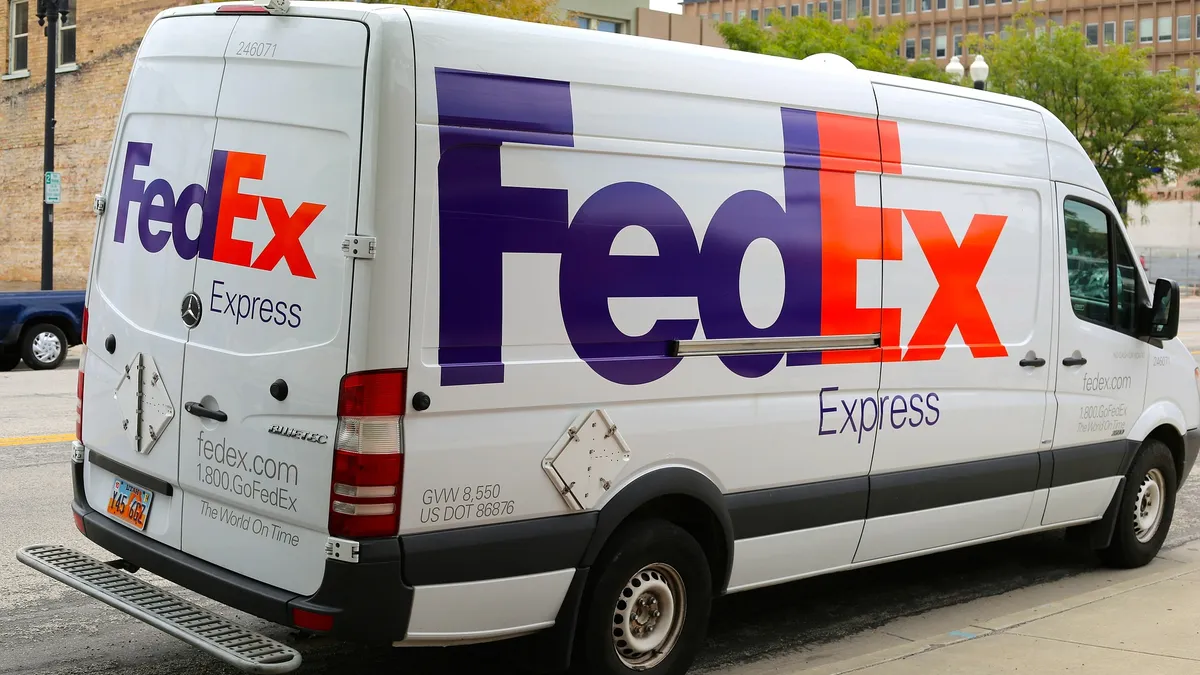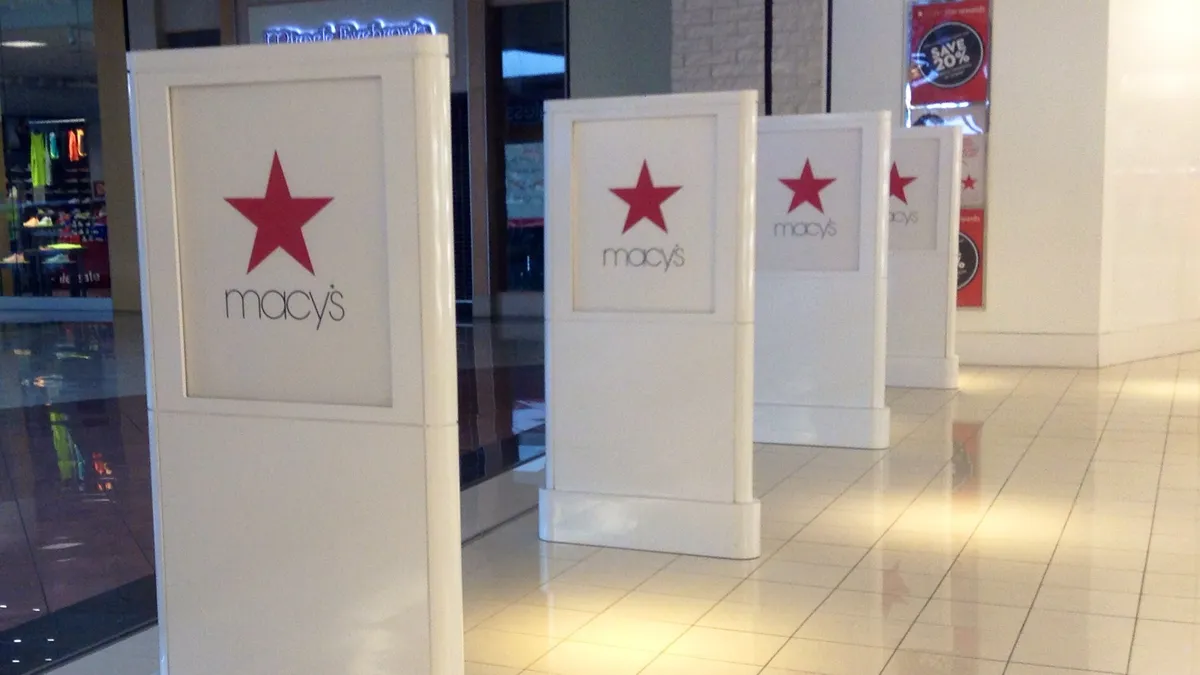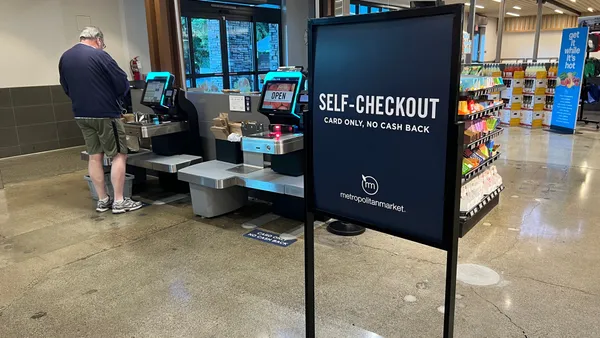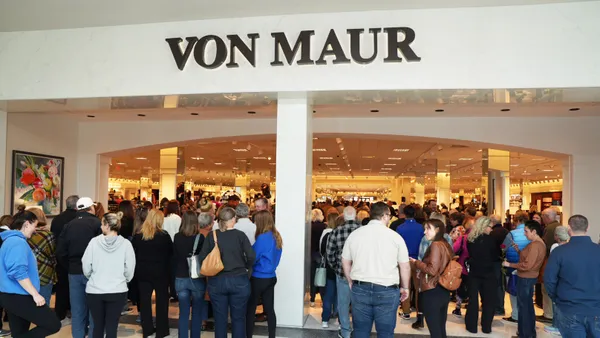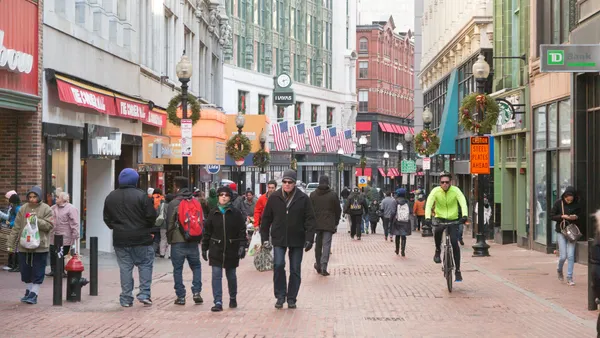Dive Brief:
- FedEx announced peak season surcharges on Tuesday beginning as early as Oct. 5, making it the final of the three major parcel carriers to levy hefty fees on shippers for the first holiday shopping season in the midst of a pandemic. UPS announced similarly structured surcharges earlier in the month. The U.S. Postal Service announced a temporary price increase for peak, which begins Oct. 18.
- From Nov. 2 to Jan. 17, domestic residential deliveries for shippers sending at least 35,000 parcels weekly via FedEx Ground or FedEx Express will incur a $1 to $5 surcharge depending on how much the shippers' parcel volume exceeds pre-pandemic levels. FedEx SmartPost packages will incur three different surcharges through different stages of peak season, ranging from $1 to $2 — more than doubling the existing peak surcharge put in place June 8 due to the pandemic.
- The oversized parcel surcharge will increase from $30 currently to $52.50 per package Oct. 5
Dive Insight:
Tuesday's announcement confirms that shippers will have no respite from surcharges and high fees this peak.
"We’re seeing an emboldened carrier base coupled with demand that is overtaking capacity – a tough combination for a very non-competitive market," said Glenn Gooding, president of iDrive Logistics.
FedEx executives said on an earnings call in July that peak surcharges were the new normal. The pandemic kept consumers at home and drastically shifted parcel volume away from B2B and toward more operationally costly B2C deliveries.
"Our FedEx Ground network has been teeming with peak-like residential volume for the past few months," said COO Raj Subramaniam in July. Parcel volume has shifted from roughly half residential to two-thirds, causing FedEx to retask facilities and lose considerable ground in their on-time delivery stats, according to ShipMatrix.
The loss of dependable service and the surcharges are already driving shippers toward regional carriers. By doing so smartly, shippers can save 7% to 12% this peak season, Satish Jindel, the president of ShipMatrix, told Supply Chain Dive.
Nate Skiver, founder of consulting firm LPF Spend Management, recommended shippers negotiate with their existing carriers and work closely on volume and capacity planning for peak, but also evaluate alternative carriers.
"There is still time to expand volume with secondary carriers ... or add a carrier to secure additional capacity and mitigate a portion of the massive surcharges from FedEx and UPS,"Skiver said.
But even with negotiations, contingencies and strategy planning, surcharges will inevitably add up.
"I expect this peak season to be turbulent and expensive," said Gooding, adding that UPS and FedEx are risking losing any status as value-add strategic partners by leveraging volume in this way.
FedEx's addition of $1 to $2 surcharges to SmartPost is especially challenging for small businesses who rely on the service's competitive rates, which often come in below USPS priority mail, according to Matthew Hertz, co-founder of Second Marathon.
SmartPost shippers will see a 10% to 20% uptick in their shipping costs during CyberWeek, according to Hertz, calling FedEx's surcharge "far greater" than USPS' increases announced last week.
"These increases are among the most punitive and widespread I've seen," Hertz said, noting that UPS and FedEx's surcharges last well into the new year. "Gone are the days where peak surcharges were only a few weeks," he said.



